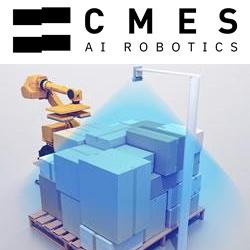Democratizing Robotic Process Automation for a scaled-up deployment to leverage Cloud Platforms
Contributed by Somit Kapoor, Vice President and Global Head, Enterprise Operations Transformation (EOT), Wipro Limited.
The dynamic technology environment provides a plethora of opportunities for organizations to grow business. In many cases, success is not determined by the size of the organization but by the speed at which they can adopt emerging technology and make it accessible to all. Democratizing automation means making automation accessible to everyone so that anyone can automate any task per their need and gain the benefits. The democratization of any technology can result in various beneficial outcomes from improvement in employee morale, the evolution of internal company culture, and most importantly, provides a competitive advantage. Additionally, the fast-paced adoption of cloud platforms makes the democratization of technology more relevant.
In most companies, Robotic Process Automation (RPA) is seen as a tool primarily used by a few members of the IT department or RPA-specific practitioners. RPA is considered an automation tool that can provide a better return on investment and improve levels of productivity. Employees may not immediately perceive its real potential leading to a roadblock in developing a company-wide automation culture and mindset. The key to overcoming this mental roadblock is democratization. By allowing employees to use automation and align their mindset accordingly, it helps the organization evolve at a faster rate. Transformation at an organization level is only possible when robots are standardized, and easily accessible. Democratizing automation also leads to improved levels of employee engagement as they feel like their organization is making investments in their skill development and knowledge with emerging technologies.
According to January 2020 survey conducted by Forrester and iUpath, 66 percent of respondents will increase RPA software spend by at least 5 percent over the next 12 months.
It can be easily implemented on legacy systems and doesn't require a whole transformation process to prepare an enterprise automation. This does not mean that companies rely only on RPA for all future needs. Instead, it should be considered as a technology to showcase the potential power of automation and deployed to achieve quick results while the main focus on automation transformation carries out in the background. RPA is very process-driven while artificial intelligence (AI) and machine learning (ML) are more data-driven concepts.
Cloud computing and AI are two technologies that are considered to be one of the driving forces for RPA adoption. With the increasing adoption of cloud servers and compute engines, most of the enterprise applications move towards cloud platforms and can be managed easily with a simple web browser. It creates an ideal opportunity for RPA to automate web applications using screen scraping, data extraction, and form filling. This mix of technologies creates a perfect use case of business process transformation. AI uniquely complements RPA. ML algorithms are key to AI and data is key to these algorithms. RPA proactively helps organizations mine and generate data which helps identify actionable business insights.
C-suite executives may not always have insight into ground level difficulties and complexities yet they are often the ones who decide which areas RPA will be implemented. To evolve an organization's culture of automation, a bottom-up approach should be used to ultimately help employees improve productivity and improve visibility at the top level. There are several inefficiencies and repetitive tasks which create frustration among employees that senior management may not be aware of or experience. An employee-driven approach to choose tasks to automate based on their needs can help organizations transform and realize the true potential and benefit of RPA.
There are several ways for an organization to shift to democratizing RPA. The first and most important step is mandatory trainings for employees to help them understand RPA and how they can use it to their benefit for daily activities. Providing training enables employees to use RPA and facilitate relative discussions, leading to greater interest and peer-training for faster learning for employees. Establishing a community of trained employees brings peers closer together to discuss and share their experiences using RPA and help others who are having difficult adapting to the technology. A central bot library is a must where anyone can download a bot to support their needs and move forward in less than five minutes. Another way to improve company culture with RPA is encouraging employees by giving recognition such as "RPA Champion" or an internal certification. Organizations can also assign "RPA Buddies" or ambassadors to each employee so they have an accessible point of contact for any challenges during their automation journey. These tasks may look daunting and time-consuming, however, the impact it will bring to the organization will be long lasting.
RPA is a technology that will enable all of us to move towards an automated world. Large-scale companies must come forward and make RPA accessible to everyone and everywhere, ultimately leading to an automated culture all around the globe.
Featured Product

